EMRS Lab Attendant Mock Test - 1 - EMRS MCQ
30 Questions MCQ Test - EMRS Lab Attendant Mock Test - 1
In the question below are given three statements followed by two conclusions numbered I and II. You have to take the given statements to be true even if they seem to be at variance from commonly known facts. Read both the conclusions and then decide which of the given conclusions logically follows from the given statements disregarding commonly known facts.
Statements:
Some walls are huts
Some huts are houses
All houses are roofs
Conclusions:
I. Some houses are walls
II. No roof is a hut
Some walls are huts
Some huts are houses
All houses are roofs
I. Some houses are walls
II. No roof is a hut
Sunita rode her scooty northwards, then turned left and after taking another left, rode 4 km. She found herself exactly 2 km west of her starting point. How far did she ride northwards initially?
Insert the correct sign & find out the result:
24 * 7 * 5 * 5 * 8 = 25
N is more intelligent than M, M isn’t as intelligent as X. X is more intelligent than Y but not as good as N. Who’s the most intelligent of them all?
Four positions of a dice are given below. Identify which number is on the face opposite 2.

Directions: In question, which answer figure will complete the question figure?
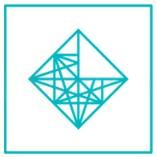
If A @ B means A is father of B, A # B means A is brother of B and A ! B means A is grandson of B, then what does P @ Q # R ! S mean?
In the figure given below, square represents people who are singers, triangle represents actors and circle represents directors. Which set of letters represents people who are both singers and directors?
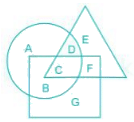
The writer can get good ideas only when he constantly rejuvenates himself. This rejuvenation comes from new experiences that the writer must take part in.
Q. Which of the following supports the thought?
"Great Barrier Reef", the world's largest Coral reef is located in
Flemings "Left hand Rule" is associated with the effect of
_________ is a by-product of sewage treatment and can be decomposed to produce biogas
The BRICS New Development Bank (NDB) is headquartered at
Which one of the following cities of Iraq is located on Tigris River?
Which of the following Act introduced separate electorates (communal representation) for Muslims?
Where is the Brihadeshwar temple, built during the Chola period, located?
Direction For question : As the Heart of Darkness makes its way into the savage shadows of the African continent, Joseph Conrad exposes a psycho-geography of the collective unconscious in the entangling symbolic realities of the serpentine Congo. Conrad’s novella descends into the unknowable darkness at the heart of Africa, taking its narrator, Marlow, on an underworld journey of individuation, a modern odyssey toward the center of the Self and the center of the Earth. Ego dissolves into soul as, in the interior; Marlow encounters his double in the powerful image of ivory-obsessed Kurtz, the dark shadow of European imperialism. The dark meditation is graced by personifications of anima in Kurtz’ black goddess, the savagely magnificent consort of the underworld, and in his porcelain -skinned Persephone, innocent intended of the upper world. “Africa,” wrote Graham Greene, “will always be the Africa in the Victorian atlas, the blank unexplored continent in the shape of the human heart.” The African heart described by Greene “acquired a new layer of meaning when Conrad portrayed the Congo under King Leopold as the Heart of Darkness, a place where barbarism triumphs over humanity, nature over technology, biology over culture, id over super ego.” The unknown and uncharted topography of the African continent first beckoned Conrad’s narrator, Marlow, into its depths in his boyhood: “Now, when I was a little chap I had a passion for maps. I would look for hours at South America, or Africa, or Australia, and lose myself in all the glories of exploration”. When Marlow was grown and Africa was no longer a blank space on the map, but rather “a place of darkness,” there was still one river there that drew him especially, “a mighty big river, that you could see on the map, resembling an immense snake uncoiled, with its head in the sea, its body at rest curving afar over a vast country, and its tail lost in the depths of the land”. This same deep place, the Congo, that had seduced Conrad’s ivory hunting Kurtz into the horrors of its savage embrace had, in 1890, lured Conrad himself into adventure that turned him from sailor to writer and severely affected his health for the rest of his life. As the voyage up the Congo pro ved fateful for the development of Conrad’s narrator, Marlow, it was equally fateful for Conrad’s individuation, as he reflects in his letters “Before the Congo I was just a mere animal.” Hillman, in “Notes on White Supremacy” reminds us that, like Conrad, both Freud and Jung were called to venture into the shadowed continent and vestiges of their journeys still colour our psychological language: The convention informing geographical discoveries and the expansion of white consciousness over Africa continue to inform psychic geography. The topological language used by Freud for “the unconscious” as a place below, different, timeless, primordial, libidinal and separated from the consciousness recapitulates what white reporters centuries earlier said about West Africa. From Conrad’s Heart of Darkness to van der Post’s Venture to the Interior, Africa and the unconscious allegorize the other place.... “Just don’t stay in the topical colonies too long; you must reign at home,” writes Freud in 1911 to Jung, who himself made the African journey fourteen years later, describing the vast lands and dark peoples he encountered in language he applies as well to the immemorial unconscious psyche.... Part of psychology’s myth is that the unconscious was “discovered” as its contents are “explored”. Thus Africa has become a topology of the mind — its location, its shape, its cultures, its textures, its rhythms, its foliage, its hues, its wildness — all calling forth something lost in the psychology of the white European. It is with an understanding of our destiny to explore that symbolic lost continent within ourselves that we can begin to appreciate the prescience of Jungian psychology in Conrad’s Heart of Darkness.
Q. According to the passage, which of the following is not true about The Congo?
The custom or practice of having more than one husband at same time
Find out the Synonym of the following word:
AUGUST
In the following questions four alternatives are given for the idiom/phrase italicised and underlined in the sentence. Choose the alternative which best expresses the meaning of idiom/phrase.
Q. The university will have to shelve its plans for expansion in view of present situation.
In the following questions four alternatives are given for the idiom/phrase italicised and underlined in the sentence. Choose the alternative which best expresses the meaning of idiom/phrase.
Q. Do not trust a man who blows his own trumpet.
Directions: In the question given below there are two statements, each statement consists of two blanks. You have to choose the option which provides the correct set of words that fits both the blanks in both the statements appropriately and in the same order making them meaningful and grammatically correct.
I. India is a ________ after destination for medical tourism, but in the area of early screening and intervention it is still ________ behind, and early developmental screening is more the exception than the rule.
II. The minister interacted with the local residents and ________ their feedback on the developmental policies as he wanted to know why the district, which was a knowledge hub earlier, was presently ________ in crucial indicators of development.
Direction: In each of the questions given below, a paragraph is given which has some blanks and those blanks have to be filled with the same word out of five words given below it. You have to choose that same word as your answer and fill up the blanks with that appropriate word.
It is very important to ____________ to rules and regulations in life if you want to achieve something. If you are a person who hates discipline and cannot ____________ to any stupid set of norms, you should definitely opt for startup stints. There you will not have to ____________ anything fixed and you can only focus on your performance.
Directions: In each of the following questions, there are four sentences or parts of sentences that form a paragraph. Identify the sentence(s) or part(s) of the sentence(s) that is/are correct in terms of grammar and usage (including spelling, punctuation, and logical consistency). Then, choose the most appropriate option.
A. Three years have passed since Dr Ira Kalish, global research head, Deloitte, visited India.
B. But the changes in modern trade are all too apparent to Kalish.
C. There has been well-publicised expansions and scale backs.
D. Some have taken a fall, and others picked pace.
Directions: In each of the following questions, there are four sentences or parts of sentences that form a paragraph. Identify the sentence(s) or part(s) of the sentence(s) that is/are correct in terms of grammar and usage (including spelling, punctuation, and logical consistency). Then, choose the most appropriate option.
A. NRIs does not include a person who has gone out of India on employment, business or vocation.
B. Or any other purpose for an uncertain period.
C. Also, a person who has come to stay in India other than employment.
D. Business or vocation, or on any other purpose for an uncertain period.
निर्देश: निम्नलिखित वाक्य के लिए विकल्पों में से उचित पद छांटिए।
जिसके बराबर का कोई न हो
निर्देश: निम्नलिखित शब्दों के लिए दिये गये विकल्पों में से सही विलोम छांटिए।
तिमिर


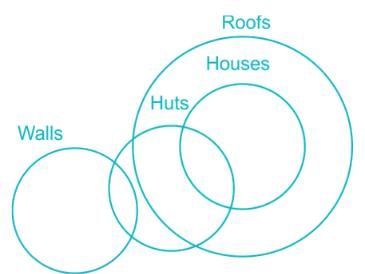
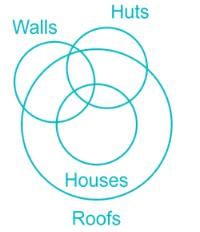
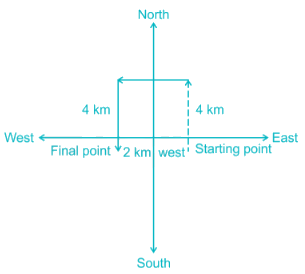



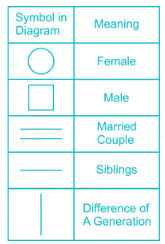

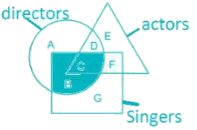 Therefore, B and C represent area who are both singers and directors.
Therefore, B and C represent area who are both singers and directors.










